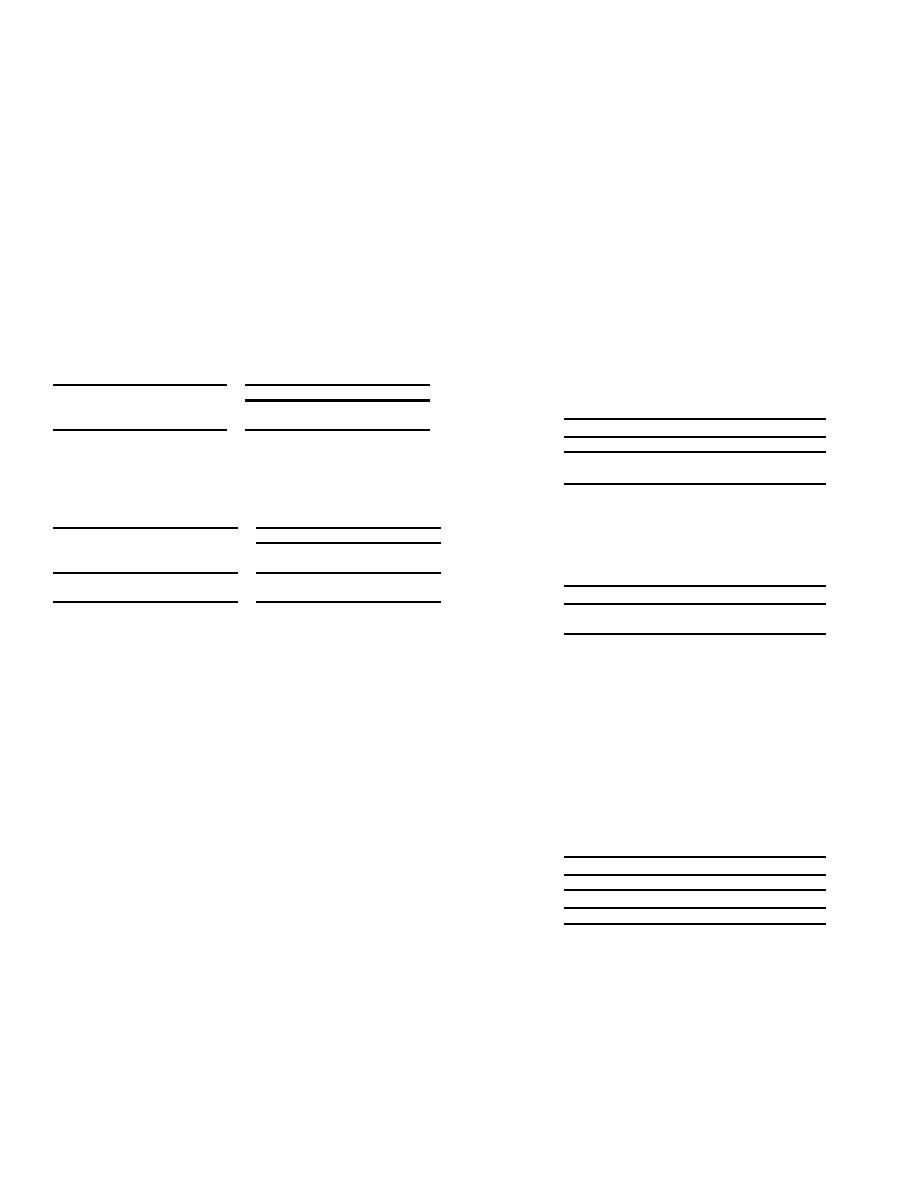
TM 5-822-12
With the exception of the wearing surface layer which
-Coarse graded crushed rock base course = 80.
will vary between 4 and 6 inches, the other layers are
-Clean sand subbase = 15.
varied based on economic factors.
However, the
Anticipated traffic.
required thickness of cover over the various layers must
-40 passes per day of 60-ton tracked vehicles.
be satisfied. Also, the minimum thickness of each layer
Calculations:
should be 4 inches.
a. From paragraph 4.d, select the traffic category
h. Possible alternatives for the tank trail section
for a 120,000-pounds tracked vehicle as Category VII.
based on frost considerations might be:
b. The design index is then determined from table
(1) Using sand subbase. From figure 1 using
3 to be 10 for 40 passes per day and Category VII
a frost-area soil support index of 3.5 and a design index
traffic.
of 10, the total thickness required above the subgrade
equals 21.0 inches. Also from figure 1, the minimum
c. The required thickness of the tank trail is
required cover over the NFS, S1, or S2 sand subbase
determined from figure 1. The following sections would
(CBR = 15) is 7.0 inches. Using a minimum layer
be adequate if the natural subgrade has the required in-
thickness of 4 inches in the wearing surface and the
place density.
course graded base course, the actual cover required
will be 8 inches. Therefore, the section might be:.
7 inches crushed rock
17 inches crushed rock
10 inches sand subbase
CBR = 15
4 inches fine-graded stone
Natural subgrade
Natural subgrade
4 inches coarse-graded crushed stone
CBR = 5
CBR = 5
13 inches well-graded sand subbase
(CBR = 15)
d. Where the subgrade is compacted to a CBR of
Subgrade
8, the following sections would be satisfactory:
(2) An alternative section might be to
12 inches crushed rock
7 inches crushed rock
construct the wearing course and subbase to a minimum
5 inches sand subbase
thickness of 4 inches.
CBR = 15
5 inches compacted subgrade
5 inches compacted subgrade
CBR = 8
CBR = 8
4 inches fine/graded stone
Natural subgrade
Natural subgrade
13 inches coarse-graded crushed stone
CBR = 5
CBR = 5
4 inches well-graded sand subbase
Subgrade
e. In areas where frost is not a factor in the design
of roads, the sections shown above are adequate, and
(3) Using F1 and F2 soils. As previously
the most economical should be used. The granular
stated, frost group soils F 1 and F2 may be used in the
material should conform to the material requirements for
lower part of the granular material over F3 and F4
nonfrost areas previously discussed.
If available,
subgrade soils. The thickness of F2 base material
subbase materials other than the clean sand may be
should not exceed the difference between the thickness
used for adjusting the sections.
required over F3 and the thickness required over an F2
subgrade. The minimum required cover over F1 soils is
11 inches, over F2 soils is 14 inches, and over F3 soils
in a severely cold area where subgrade freezing is
is 21 inches. Using a minimum layer thickness of 4
predicted.
inches, the following section may be used:
g. In areas where frost is a consideration, the tank
4 inches fine-graded stone
trail should consist of the following layers:
7 inches coarse-graded crushed stone
4 inches frost group soil Fl
-A wearing surface of fine-graded crushed rock.
6 inches frost group soil F2
-A base course of coarse-graded crushed rock.
Subgrade - F3
-A subbase of well-graded sand, frost group soils
For economy, based on material availability, these
F1 and F2, or geotextile.
sections may be altered as long as a higher-quality
material is used above a lesser-quality material. For
As previously stated, the function of the last layer as a
example, crushed stone could be substituted for the F1
filter layer is not always required, depending upon the
soil.
subgrade material. In this case the subgrade is a CL;
therefore, it is required. According to table 6, the frost
area soil support index for an F3 subgrade soil is 3.5.
13


 Previous Page
Previous Page
